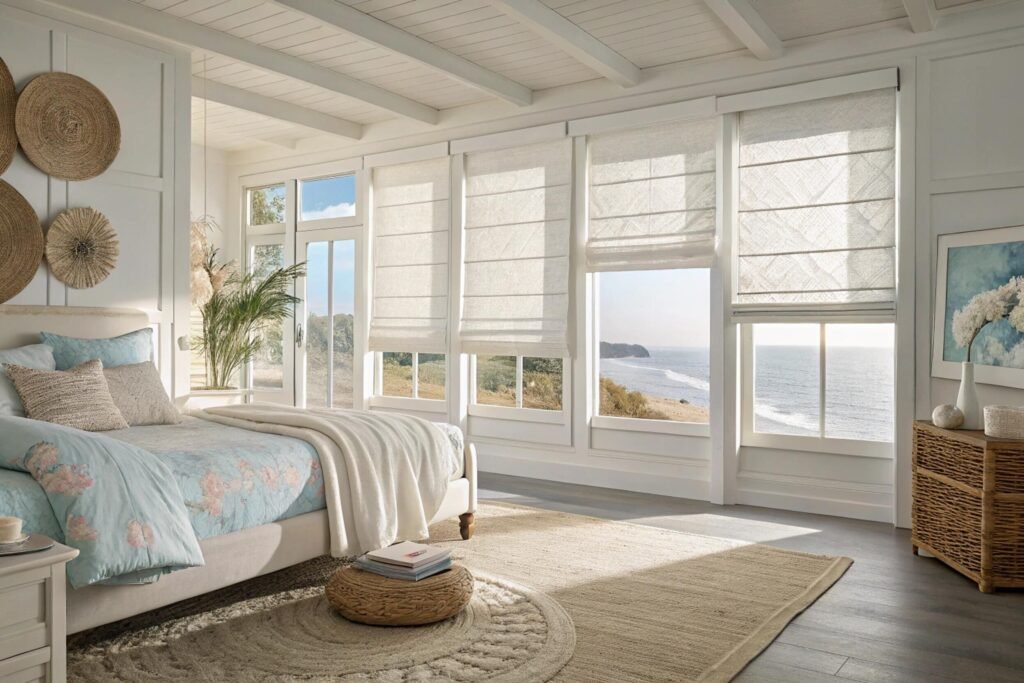Hard window treatments can feel cold and impersonal. But traditional drapes are often too bulky for modern, clean designs. This leaves a frustrating gap.
Roman shades are fabric window coverings that create soft, neat horizontal folds when raised. Unlike roller shades that roll up, Roman shades[^1] stack up elegantly, combining the softness of drapery with the clean function of a shade.

Their graceful look can elevate any room, but specifying the right one requires more than just picking a pretty fabric. The construction, fold style, and hardware are critical to achieving that flawless, high-end finish your projects demand. Let’s unfold the details you need to know.
How are Roman shades constructed with horizontal fold mechanisms and fabric panels?
The folds look simple, but the wrong mechanism causes sagging and uneven stacks. Understanding the construction is key to ordering a product that works perfectly.
A Roman shade is built from a panel of fabric fitted with rings and cords on the back. As you pull the main operating cord, it lifts the lower sections, creating a series of crisp, uniform horizontal folds that stack at the top.

The beauty of a Roman shade is all in the engineering hidden behind the fabric. The type of fold is the most visible choice. A flat Roman shade is clean and minimalist, perfect for showing off a bold pattern. A hobbled or teardrop shade[^2] has permanent, soft, looping folds that add more depth and texture even when fully lowered. Behind the scenes, thin dowels or battens are often sewn into the fabric to ensure the folds are perfectly straight and crisp. The quality of the cord lock mechanism is also vital. A cheap one will slip or fail, while a high-quality system ensures smooth, reliable operation for years. I learned early on that skimping on the hardware is a recipe for a client callback, so we only source mechanisms that guarantee a flawless fold every time.
Common Roman Shade Styles
| Style | Description | Best For |
|---|---|---|
| Flat Roman | A single, flat piece of fabric when lowered. | Showcasing bold fabric patterns, minimalist designs. |
| Hobbled Roman | Soft, looping folds are visible even when lowered. | Adding depth and texture, traditional or romantic styles. |
| Relaxed Roman | No bottom dowel, creating a gentle "smile" curve. | A softer, more casual and informal look. |
What’s the difference between a roller blind and a Roman blind?
Confusing these two can lead to major design mismatches. They serve very different aesthetic purposes, even though both cover a window. Let’s clarify the key distinction.
A roller blind is a single, flat piece of material that rolls around a tube. A Roman blind is a fabric panel that folds up into a stack. The difference is "rolling" versus "folding," creating a minimalist or a soft, textured look.

Choosing between a roller and a Roman shade comes down to the desired final aesthetic. As a project partner for designers like Emma, I help them select the right product for their vision. A roller shade is the ultimate minimalist. It’s a flat, functional canvas that does its job and then disappears when rolled up, maximizing the view. A Roman shade, on the other hand, is a decorative element in itself. Its purpose is to add softness, texture, and a touch of classic elegance. The fabric stack remains at the top of the window even when fully raised, acting as a small valance that frames the view. If the goal is a sleek, almost invisible look, choose a roller shade. If the goal is to add a layer of soft, tailored luxury, the Roman shade is the clear winner.
What is the difference between natural shades and Roman shades?
You’ve heard both terms, but are they the same thing? This is a common point of confusion that’s simple to clear up. Let’s define them properly.
This is a difference between material and mechanism. "Natural shades" are defined by what they’re made of (bamboo, jute, reeds). "Roman shades" are defined by how they operate (they fold). You can have a Roman shade made from natural materials.
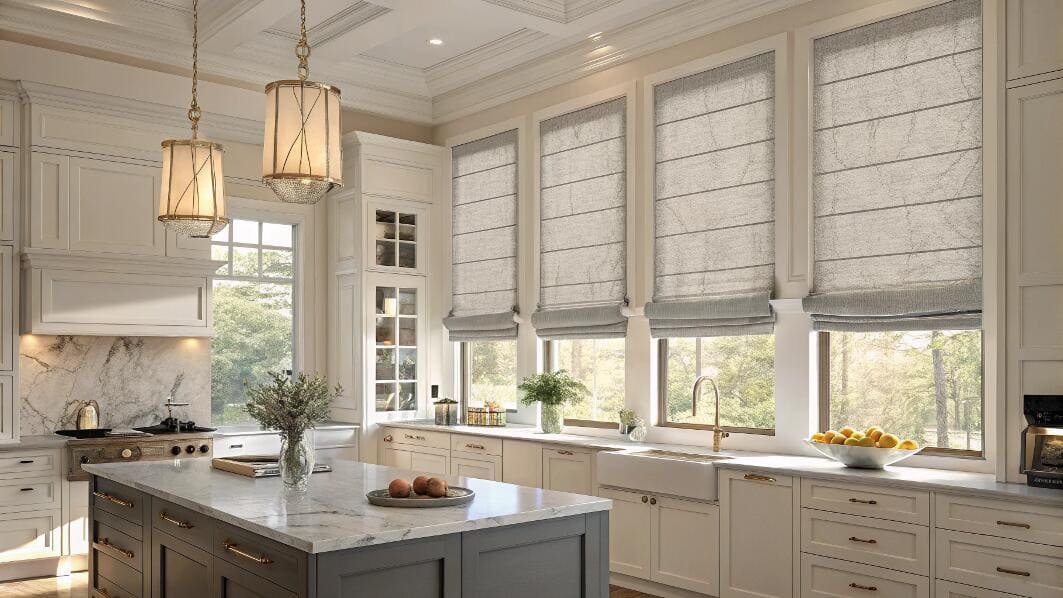
This is one of my favorite product categories because it combines the best of both worlds. A standard Roman shade is made from a soft textile fabric. A standard natural shade is often built like a roller shade, just with woven wood instead of fabric. But a "Natural Woven Roman Shade[^3]" is a premium hybrid. It uses beautiful, textured materials like bamboo or grass, but it’s constructed with the folding mechanism of a Roman shade. This gives you the organic, earthy feel of woven woods plus the elegant, soft, stacked look of a Roman. For a project that calls for warmth, texture, and a sophisticated structure, this combination is unbeatable. It delivers more visual depth and a more tailored appearance than a simple roll-up natural shade.
What is the purpose of Roman shades?
Why choose a Roman shade over other options? They fill a unique and important niche in the world of window treatments. Let’s get to the point.
The purpose of Roman shades is to provide the decorative elegance and soft texture of curtains with the clean, practical functionality of a blind. They are the bridge between "hard" and "soft" window coverings.

Roman shades offer a unique combination of benefits that no other single window treatment can. They solve the problem of a room feeling too cold with just blinds, but too formal or cluttered with full draperies. With a Roman shade, you can introduce a beautiful fabric—a bold pattern, a rich solid color, or a subtle texture—without overwhelming the space. They add a layer of insulated fabric to the window, which can help with energy efficiency, much like curtains. But they operate with the simple, contained motion of a shade, keeping sightlines clean and avoiding the stacks of fabric on either side of the window that come with drapes. They are the perfect tool for an interior designer looking to add a touch of tailored softness and personality to a room.
Do Roman shades make a room look bigger?
Worried that fabric shades will make a small room feel cramped? With the right technique, they can actually do the opposite. Here’s how to use them to create space.
Yes, Roman shades can make a room look bigger if mounted high and wide. Installing the shade well above the window casing and extending it past the sides makes the window appear larger, drawing the eye upward.
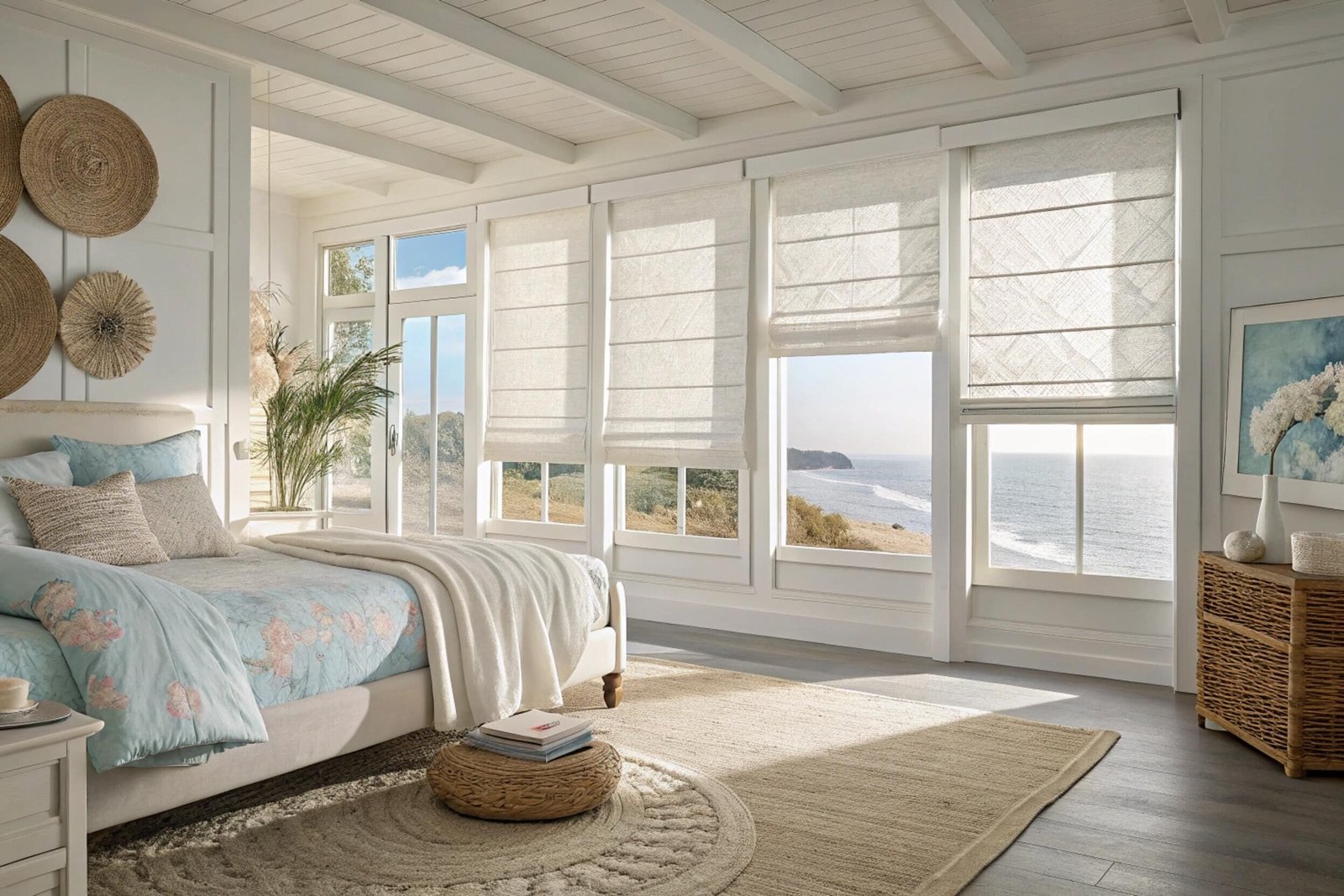
This is a classic designer trick that I always share with my partners. Mounting a Roman shade inside the window frame is a neat, tidy look. But to create the illusion of height and space, an outside mount is essential. By hanging the shade 4 to 6 inches above the top of the window frame, you trick the brain into thinking the window itself starts higher up, making the entire wall feel taller. When the shade is fully raised, its stack sits completely above the glass, allowing the maximum amount of natural light to flood in, which also makes a space feel larger and more open. Extending the shade a few inches on either side of the frame completes the illusion of a grander window. It’s a simple, intentional choice during installation that can have a huge impact on the final feel of the room.
Do Roman shades add value to a home?
Are custom Roman shades a worthwhile investment for a property? When it comes to resale, good window treatments matter. Let’s look at the return on investment.
Yes, high-quality, custom-fit Roman shades absolutely add value to a home. They are perceived as a permanent, luxurious upgrade, signaling quality and thoughtful design to potential buyers far more than builder-grade blinds would.
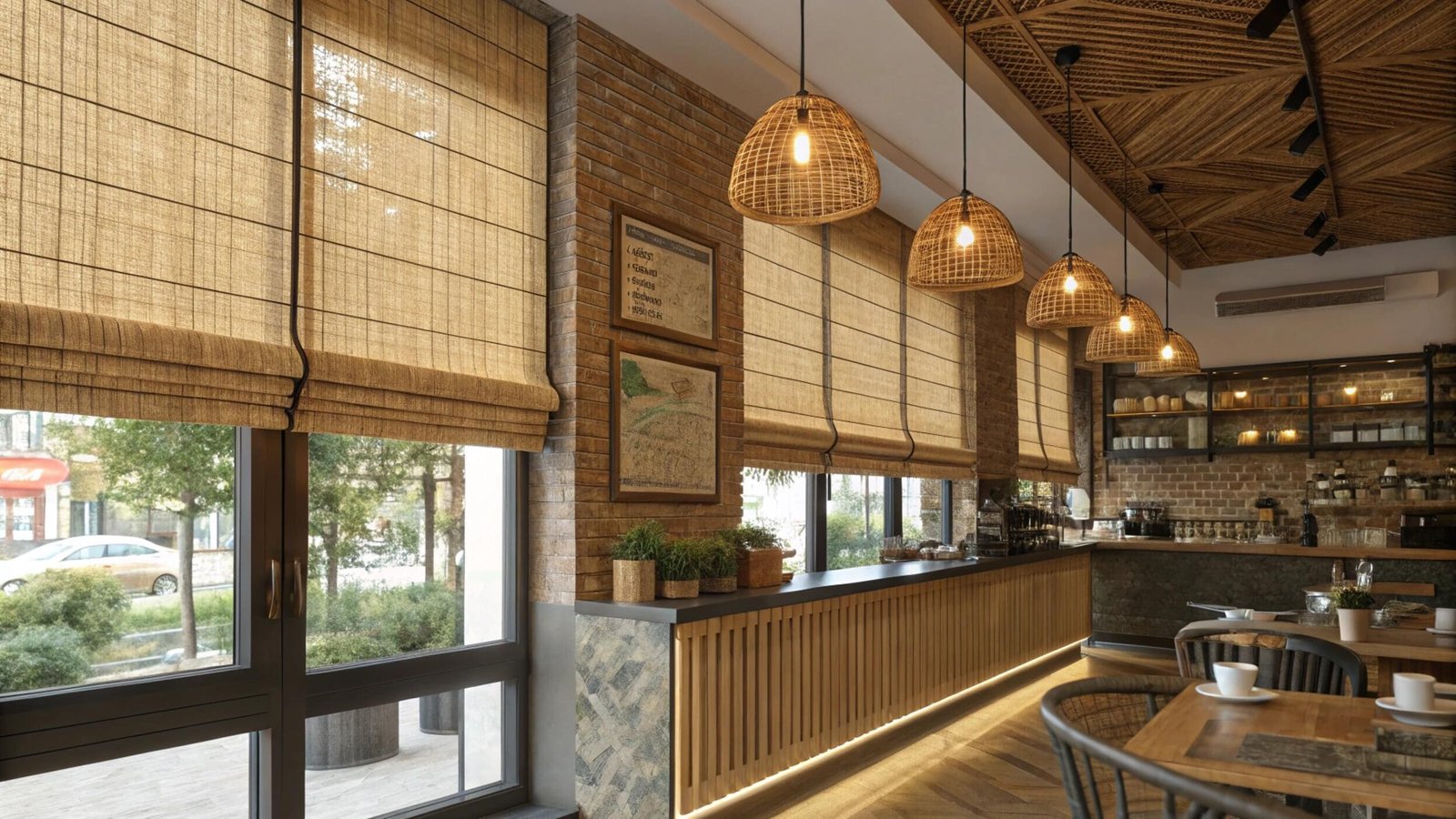
When a potential buyer walks into a home, every detail contributes to their overall impression. Cheap, ill-fitting plastic blinds can be a negative, suggesting that corners were cut and that they’ll have an immediate expense to replace them. Custom Roman shades do the exact opposite. They communicate quality and permanence. Because they are made with beautiful fabrics and are tailored to the specific window, they feel like an integral part of the home’s design, not an afterthought. Adding a thermal or blackout liner also adds a tangible benefit—energy efficiency[^4] or better sleep—which is a strong selling point. For a designer or homeowner preparing a property for sale, upgrading from basic blinds to custom Roman shades is one of an interior designer’s secret weapons for increasing perceived value and helping the home stand out.
Why are Roman shades so expensive?
Have you been surprised by a quote for custom Roman shades? The price is not about the basic materials, but about the skilled work involved.
Roman shades are expensive because they are labor-intensive to produce. Unlike a simple roller shade, each one must be manually cut, sewn, assembled, and stitched by a skilled craftsperson, which takes significant time and expertise.
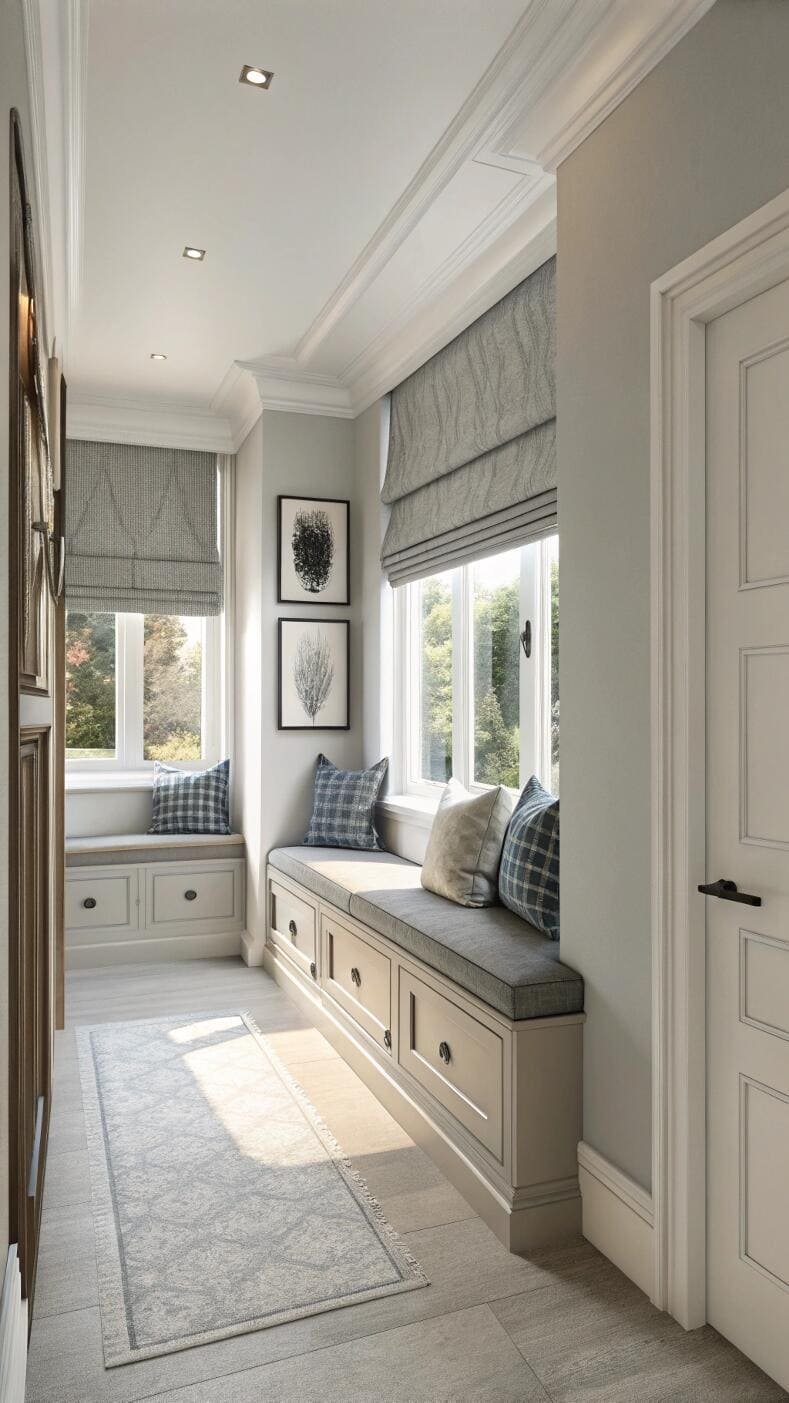
A roller shade is a fairly simple product to manufacture. A machine can cut the fabric to size, and it’s quickly attached to a roller tube. A Roman shade is a different story entirely. It’s more like making a piece of custom clothing. A skilled artisan has to precisely measure and cut the main fabric and the liner. They have to sew perfectly straight channels for the support rods, and then painstakingly hand-stitch dozens of small rings onto the back in a precise grid. Then, the cords must be threaded through all these rings and attached to the control mechanism. This process cannot be automated; it requires a human touch and an eye for detail. This significant amount of skilled labor is the primary reason for their higher price point compared to mass-produced, hard-wired blinds.
How does custom Roman shade fabrication affect pricing and lead times?
You need to plan project timelines and budgets accurately. Custom work has its own set of rules. Let’s look at the factors that affect the schedule.
Since every shade is made to order, lead times are longer, typically 3-6 weeks. Pricing is directly impacted by the chosen fabric, final dimensions, and any upgrades like motorization or special liners.
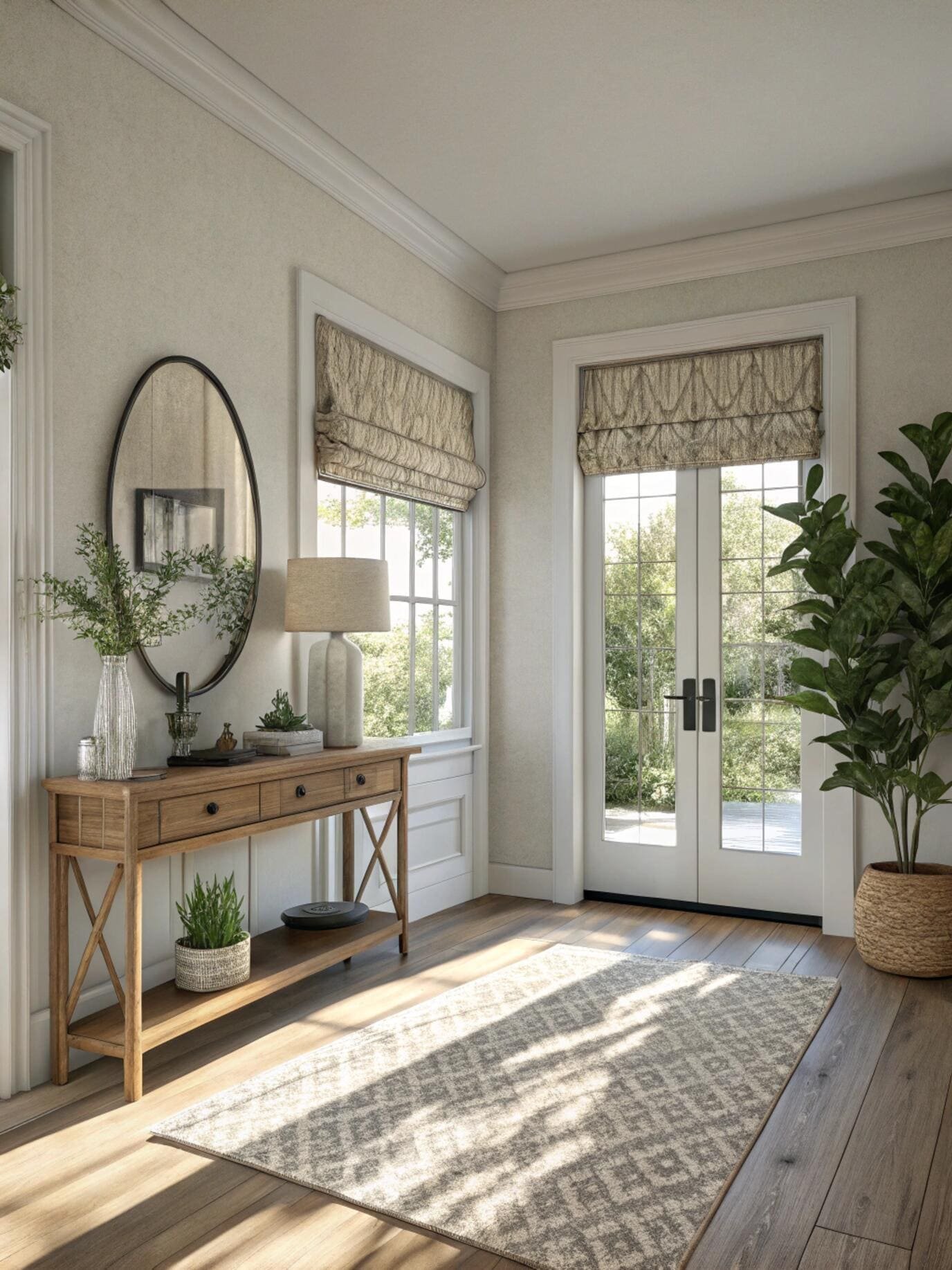
When a professional like Emma places an order for custom Roman shades, she needs a reliable timeline. Unlike off-the-shelf products, we can’t just pull these from a warehouse. The clock starts when the final specifications are approved. If a designer chooses a specific "Customer’s Own Material" (COM) fabric, we have to wait for that fabric to arrive at the workroom. Larger or more complex shades naturally take more time to sew. Adding motorization also adds a step, as the motor needs to be integrated and tested. This manual, bespoke process is what ensures a perfect fit and finish, but it also means lead times[^5] are longer than for mass-produced blinds. I always work closely with my partners to provide transparent lead times based on their exact specifications, so they can manage their client’s expectations and project schedules effectively.
What is the downside to Roman shades?
They are beautiful and elegant, but no product is without its drawbacks. It is essential to understand their limitations before you make a final decision.
The primary downsides are the fabric "stack" at the top that blocks some view even when fully raised, the difficulty of cleaning fabric, and the safety hazard posed by cords unless a cordless or motorized system is chosen.
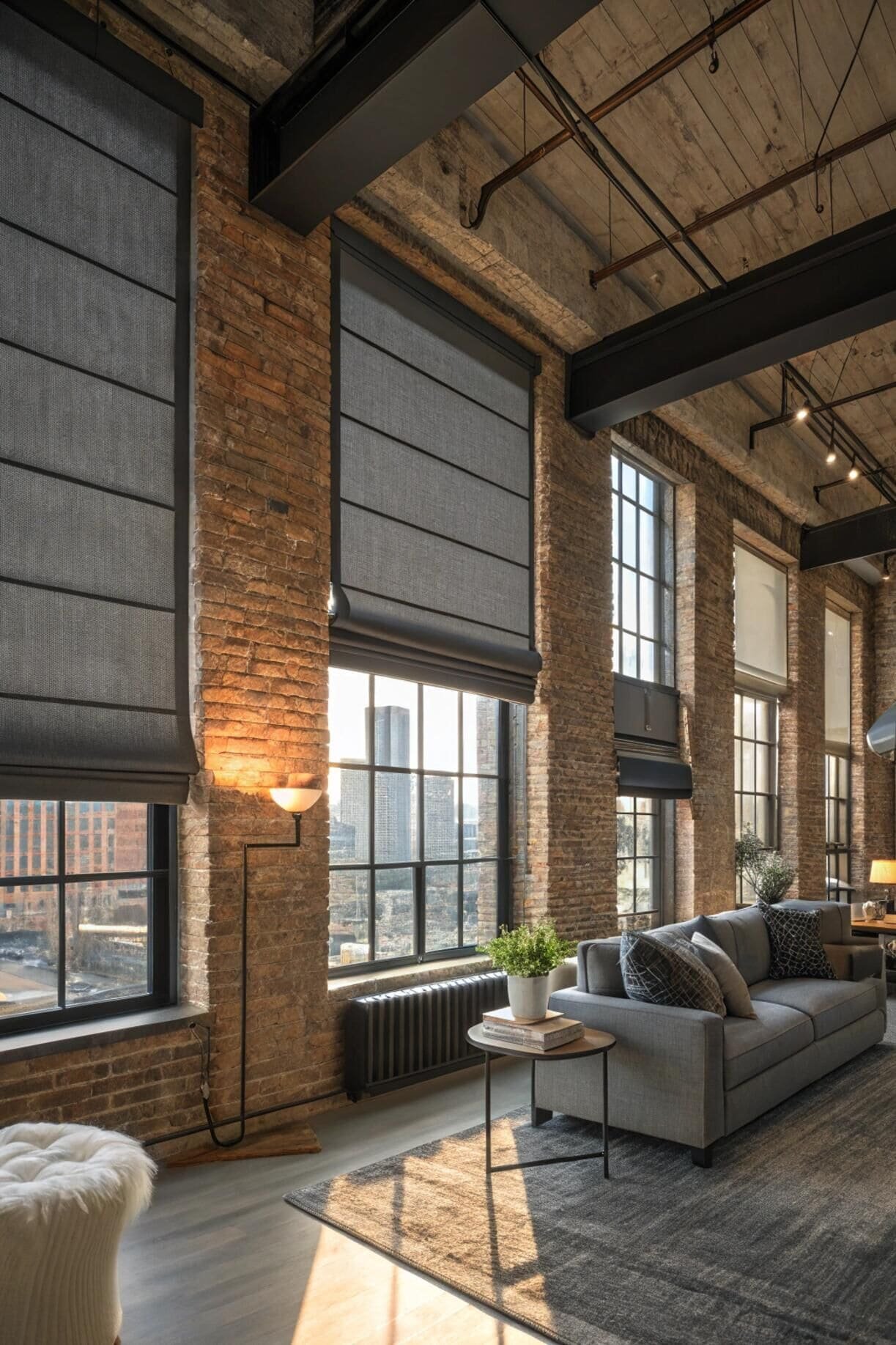
Being transparent about a product’s limitations is key to a successful project. First, the stack. When you raise a Roman shade, the folded fabric creates a stack at the top that is typically 8 to 12 inches deep. On a short window or one with a stunning view, this can be an unwelcome obstruction. Second, cleaning is more involved. You can’t just wipe down fabric like you can vinyl or aluminum. Roman shades require regular dusting, and spot cleaning must be done carefully to avoid water marks. Deep cleaning often requires professional help. Lastly, traditional corded Roman shades pose a real safety risk for children and pets. This is why at VelaBlinds, we strongly advocate for and specialize in cordless and motorized options, which completely eliminate this danger and provide a cleaner, more modern look.
How long will Roman shades last?
You are making a significant investment in a high-end product. How long can you expect it to last? Let’s discuss the realistic lifespan of a quality Roman shade.
A well-made, high-quality Roman shade will last 7-10 years, and often longer. Longevity depends on the durability of the fabric, the quality of the internal cord mechanism, and the level of exposure to direct sunlight.
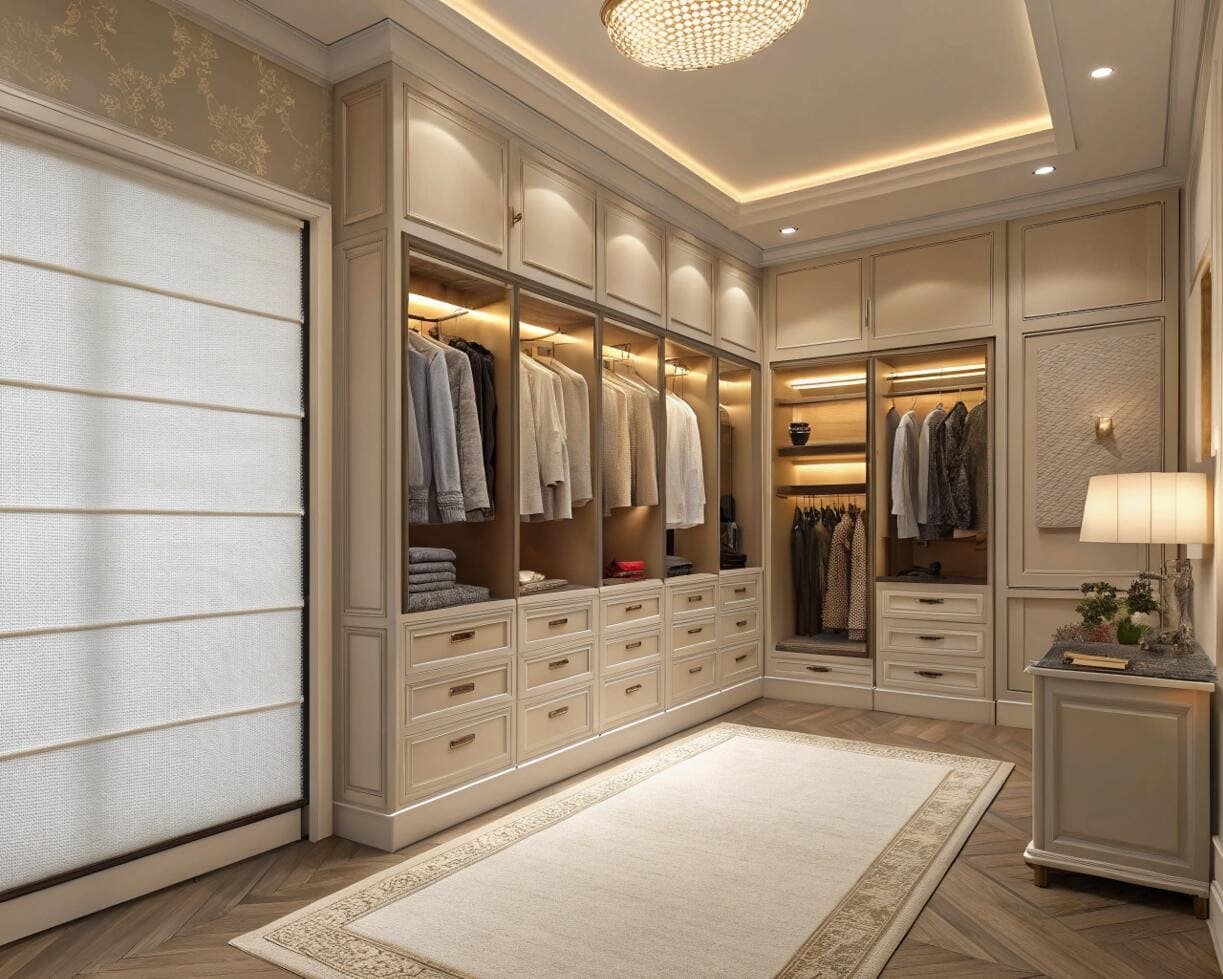
The lifespan of a Roman shade is a testament to its quality. The biggest factor is the fabric. A high-quality textile treated for UV resistance will resist fading and becoming brittle for many years. A cheap, thin fabric will degrade much faster in a sunny window. The construction quality is just as important. The stitching must be strong, and the internal components, like the cord lock and rings, must be durable. A cheaply made shade will have cords that fray or a mechanism that fails, rendering the shade useless even if the fabric is still in good condition. Gentle operation also plays a part. Motorization can actually extend the life of a shade because the movement is always smooth and controlled, putting less stress on the components than manual pulling. A quality Roman shade is a long-term addition to a home’s decor.
Conclusion
In essence, Roman shades offer a uniquely elegant solution, blending the soft luxury of fabric with the crisp function of a shade. They are a premium investment for elevating any interior.
---
[^1]: Explore the unique advantages of Roman shades, combining elegance and functionality for your home.
[^2]: Learn about the unique characteristics of teardrop shades and their decorative appeal.
[^3]: Discover the benefits of combining natural materials with the elegance of Roman shades.
[^4]: Learn how Roman shades can contribute to better energy efficiency and comfort in your home.
[^5]: Get insights into the timeline for ordering custom Roman shades and what influences it.Partner with VelaBlinds for Your Next Project
Smart window treatments shouldn’t be complicated. After working with 500+ distributors and contractors worldwide, I’ve streamlined the process to get you quality products, competitive pricing, and reliable support – every time.
Why project professionals choose VelaBlinds:
- ✅ Fast, Accurate Quotes – Detailed specs and pricing within 24 hours
- ✅ Transparent Pricing – No hidden fees, volume discounts clearly outlined
- ✅ Quality Assurance – Direct partnerships with certified OEM manufacturers
- ✅ Project Support – Dedicated account manager from quote to delivery
Start your next project:
📧 Quick Quote: Send your requirements to info@velablinds.com
📱 Direct Contact: WhatsApp +86 137 2012 8317
🌐 Browse Solutions: https://velablinds.com/
📁 Product Resources: Access spec sheets, catalogs & project files
Jimmy Chen, Founder
"I built VelaBlinds to solve the real challenges I faced as a project buyer – long lead times, unclear specs, and unreliable suppliers. Let’s discuss how we can power your projects with smarter blinds."
Serving distributors and contractors across North America, Europe, and Australia since 2018.

